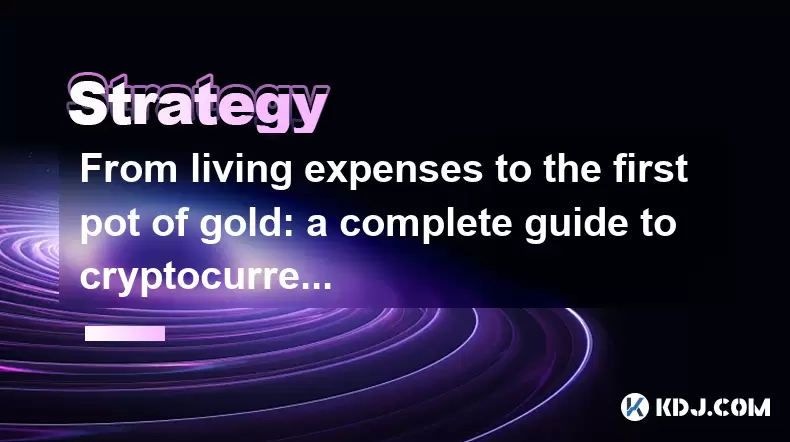-
 Bitcoin
Bitcoin $115200
-2.68% -
 Ethereum
Ethereum $3601
-5.16% -
 XRP
XRP $3.035
-2.96% -
 Tether USDt
Tether USDt $0.9997
-0.04% -
 BNB
BNB $764.5
-5.43% -
 Solana
Solana $168.1
-5.92% -
 USDC
USDC $0.9998
-0.02% -
 Dogecoin
Dogecoin $0.2090
-4.80% -
 TRON
TRON $0.3272
-0.49% -
 Cardano
Cardano $0.7306
-5.00% -
 Hyperliquid
Hyperliquid $39.16
-12.22% -
 Stellar
Stellar $0.3967
-4.96% -
 Sui
Sui $3.566
-5.95% -
 Chainlink
Chainlink $16.55
-6.57% -
 Bitcoin Cash
Bitcoin Cash $552.3
-3.90% -
 Hedera
Hedera $0.2516
-4.69% -
 Avalanche
Avalanche $21.99
-5.75% -
 Toncoin
Toncoin $3.621
-0.28% -
 Ethena USDe
Ethena USDe $1.000
-0.03% -
 UNUS SED LEO
UNUS SED LEO $8.951
0.02% -
 Litecoin
Litecoin $105.9
-3.59% -
 Shiba Inu
Shiba Inu $0.00001232
-5.00% -
 Polkadot
Polkadot $3.640
-5.55% -
 Uniswap
Uniswap $9.048
-7.03% -
 Monero
Monero $301.8
-1.51% -
 Dai
Dai $0.9999
-0.01% -
 Bitget Token
Bitget Token $4.334
-3.66% -
 Pepe
Pepe $0.00001064
-6.17% -
 Cronos
Cronos $0.1367
-5.78% -
 Aave
Aave $259.2
-4.59%
From living expenses to the first pot of gold: a complete guide to cryptocurrency band trading
Cryptocurrency band trading offers a strategy to profit from short-term price movements within a set range, ideal for covering living expenses or building wealth.
Jun 04, 2025 at 09:49 pm

From living expenses to the first pot of gold: a complete guide to cryptocurrency band trading
Cryptocurrency band trading has become an increasingly popular strategy for investors looking to navigate the volatile crypto markets. This approach involves trading within a specific price range, known as a band, to capitalize on short-term price movements. Whether you're looking to cover your living expenses or build your first pot of gold, understanding the intricacies of band trading can be a valuable tool in your investment arsenal. In this comprehensive guide, we'll explore the fundamentals of cryptocurrency band trading, from setting up your strategy to executing trades and managing risks.
Understanding Cryptocurrency Band Trading
Cryptocurrency band trading is a strategy that involves identifying a price range within which a particular cryptocurrency is likely to fluctuate. Traders aim to buy at the lower end of the band and sell at the upper end, profiting from the price movement within the range. This approach can be particularly effective in markets that exhibit sideways trends, where the price oscillates between two levels without a clear upward or downward trajectory.
To implement a successful band trading strategy, it's crucial to understand the factors that influence price movements within the band. These can include market sentiment, trading volume, and broader economic indicators. By closely monitoring these factors, traders can better anticipate when a cryptocurrency is likely to hit the upper or lower bounds of the band, allowing them to time their trades more effectively.
Setting Up Your Band Trading Strategy
Before diving into band trading, it's essential to establish a clear strategy that aligns with your financial goals. Whether you're aiming to cover your living expenses or build a substantial nest egg, your approach will need to be tailored to your risk tolerance and investment horizon.
- Identify the cryptocurrency: Start by selecting a cryptocurrency that you believe will exhibit the necessary price volatility to make band trading viable. Popular choices include Bitcoin, Ethereum, and other major altcoins with high trading volumes.
- Determine the band: Use technical analysis tools, such as moving averages and Bollinger Bands, to identify the upper and lower bounds of the price range. These tools can help you establish a clear band within which you'll be trading.
- Set your entry and exit points: Decide on the specific price levels at which you'll enter and exit trades. For example, you might choose to buy when the price reaches the lower band and sell when it hits the upper band.
- Calculate your position size: Determine how much of the cryptocurrency you'll buy or sell based on your risk tolerance and the size of your trading account. This will help you manage your exposure and limit potential losses.
Executing Trades Within the Band
Once you've set up your band trading strategy, it's time to start executing trades. This process involves closely monitoring the market and acting swiftly when the cryptocurrency reaches your predetermined entry and exit points.
- Monitor the market: Keep a close eye on the price movements of the cryptocurrency you're trading. Use real-time charts and trading platforms to track the price in relation to your established band.
- Enter the trade: When the price reaches the lower bound of your band, place a buy order to enter the trade. Be sure to use limit orders to ensure you get the price you're targeting.
- Set stop-loss and take-profit orders: To manage your risk, set stop-loss orders below your entry point to limit potential losses. Similarly, set take-profit orders near the upper bound of your band to secure profits when the price reaches your target.
- Exit the trade: When the price reaches the upper bound of your band, place a sell order to exit the trade. Again, use limit orders to ensure you get the price you're aiming for.
Managing Risks in Band Trading
Band trading, like any form of trading, comes with inherent risks. To protect your capital and maximize your chances of success, it's crucial to implement effective risk management strategies.
- Diversify your portfolio: Don't put all your eggs in one basket. Consider trading multiple cryptocurrencies within different bands to spread your risk.
- Use proper position sizing: Never risk more than a small percentage of your trading account on any single trade. A common rule of thumb is to risk no more than 1-2% of your account on each trade.
- Stick to your strategy: Emotional trading can lead to poor decision-making. Stick to your predetermined entry and exit points, and avoid chasing the market or making impulsive trades.
- Keep a trading journal: Record your trades, including entry and exit points, position sizes, and the rationale behind each trade. This can help you identify patterns and improve your strategy over time.
Scaling Up Your Band Trading
As you gain experience and confidence in your band trading strategy, you may want to consider scaling up your operations. This can involve increasing your position sizes, trading more frequently, or diversifying into additional cryptocurrencies.
- Increase position sizes gradually: As your account grows, you can gradually increase the size of your positions. However, always stick to your risk management rules and never risk more than you can afford to lose.
- Trade more frequently: If you find that your band trading strategy is consistently profitable, you may want to consider trading more frequently to capitalize on more opportunities.
- Diversify into additional cryptocurrencies: Once you've mastered band trading with one cryptocurrency, you can apply the same principles to other coins. This can help you spread your risk and potentially increase your returns.
Frequently Asked Questions
Q: Can band trading be used for long-term investing?
A: Band trading is typically considered a short-term trading strategy, focusing on profiting from price movements within a specific range. While it can be used to accumulate cryptocurrency over time, it's not generally suited for long-term buy-and-hold investing. For long-term investing, strategies like dollar-cost averaging or fundamental analysis may be more appropriate.
Q: How do I choose the right time frame for my band trading strategy?
A: The choice of time frame for band trading depends on your trading style and goals. Shorter time frames, such as 15-minute or hourly charts, are suitable for day traders looking to capitalize on intraday price movements. Longer time frames, such as daily or weekly charts, may be more appropriate for swing traders or those with less time to monitor the markets. Experiment with different time frames to find what works best for you.
Q: Is band trading suitable for beginners?
A: Band trading can be a good strategy for beginners, as it provides a clear framework for entering and exiting trades. However, it still requires a solid understanding of technical analysis and risk management. Beginners should start with small position sizes and gradually increase their exposure as they gain experience and confidence.
Q: How do I handle situations where the price breaks out of the band?
A: When the price breaks out of your established band, it's important to have a plan in place. If the breakout is accompanied by high trading volume and other confirming indicators, it may signal a new trend. In this case, you might consider adjusting your band or switching to a trend-following strategy. If the breakout appears to be a false move, you can wait for the price to return to the band before re-entering your trades. Always stick to your risk management rules and avoid chasing the market.
Disclaimer:info@kdj.com
The information provided is not trading advice. kdj.com does not assume any responsibility for any investments made based on the information provided in this article. Cryptocurrencies are highly volatile and it is highly recommended that you invest with caution after thorough research!
If you believe that the content used on this website infringes your copyright, please contact us immediately (info@kdj.com) and we will delete it promptly.
- Ethereum's Rocky Climb: Analysts Eye New ATH Despite Recent Dip
- 2025-08-02 10:30:11
- Ethereum Price, ETF Inflows, and ETH Tokens: What's Driving the Market?
- 2025-08-02 10:50:12
- Ethereum, ADA, and Price Support: What's Next for These Crypto Titans?
- 2025-08-02 10:50:12
- XRP, Ripple, and Transfers: Decoding the Latest Moves
- 2025-08-02 11:10:12
- Injective (INJ) Price Analysis: Breakout or Breakdown?
- 2025-08-02 10:55:35
- Cardano Price, Pi Network, and Crypto Presales: What's the Buzz?
- 2025-08-02 08:50:12
Related knowledge

How to avoid common crypto investment mistakes?
Jul 13,2025 at 01:35am
Understanding the Risks of Crypto InvestmentInvesting in cryptocurrency can be highly rewarding, but it also comes with significant risks. One of the ...

What is a long-short crypto strategy?
Jul 15,2025 at 10:56am
Understanding the Basics of a Long-Short Crypto StrategyA long-short crypto strategy is an investment approach where traders simultaneously take long ...

What is a long-short crypto strategy?
Jul 11,2025 at 01:28pm
Understanding the Basics of Long-Short Crypto StrategyA long-short crypto strategy is an investment approach where traders take both long and short po...

How to use the RSI indicator for crypto?
Jul 12,2025 at 03:56pm
Understanding the RSI Indicator in Cryptocurrency TradingThe Relative Strength Index (RSI) is a momentum oscillator used to measure the speed and chan...

Is copy trading a good strategy for crypto beginners?
Jul 12,2025 at 08:28am
Understanding Copy Trading in the Cryptocurrency MarketCopy trading is a strategy where novice traders replicate the trades of experienced investors a...

How to build a crypto portfolio with $1000?
Jul 13,2025 at 08:14pm
Understanding the Basics of Cryptocurrency InvestmentBuilding a crypto portfolio with $1000 starts with understanding the fundamentals of cryptocurren...

How to avoid common crypto investment mistakes?
Jul 13,2025 at 01:35am
Understanding the Risks of Crypto InvestmentInvesting in cryptocurrency can be highly rewarding, but it also comes with significant risks. One of the ...

What is a long-short crypto strategy?
Jul 15,2025 at 10:56am
Understanding the Basics of a Long-Short Crypto StrategyA long-short crypto strategy is an investment approach where traders simultaneously take long ...

What is a long-short crypto strategy?
Jul 11,2025 at 01:28pm
Understanding the Basics of Long-Short Crypto StrategyA long-short crypto strategy is an investment approach where traders take both long and short po...

How to use the RSI indicator for crypto?
Jul 12,2025 at 03:56pm
Understanding the RSI Indicator in Cryptocurrency TradingThe Relative Strength Index (RSI) is a momentum oscillator used to measure the speed and chan...

Is copy trading a good strategy for crypto beginners?
Jul 12,2025 at 08:28am
Understanding Copy Trading in the Cryptocurrency MarketCopy trading is a strategy where novice traders replicate the trades of experienced investors a...

How to build a crypto portfolio with $1000?
Jul 13,2025 at 08:14pm
Understanding the Basics of Cryptocurrency InvestmentBuilding a crypto portfolio with $1000 starts with understanding the fundamentals of cryptocurren...
See all articles

























































































